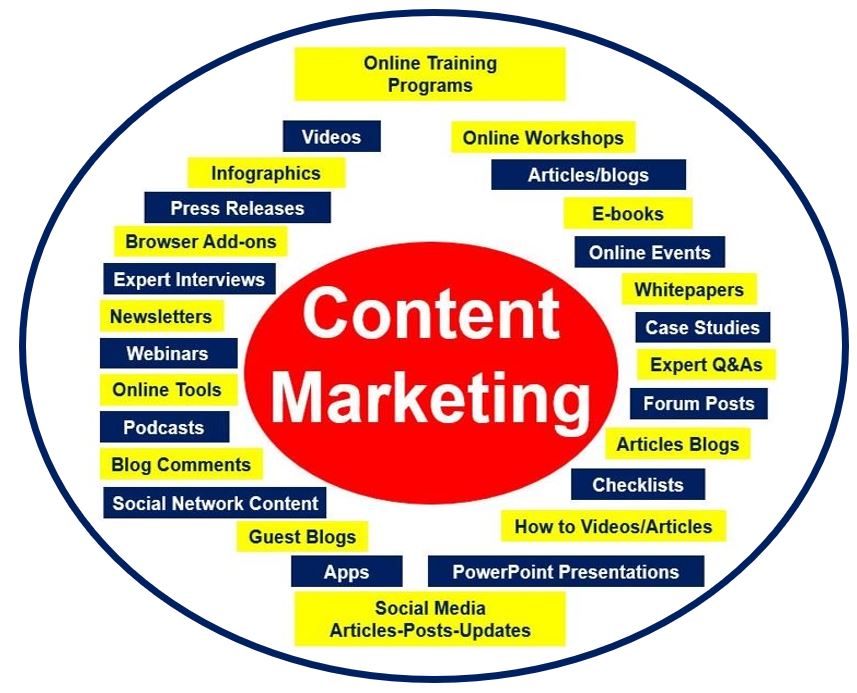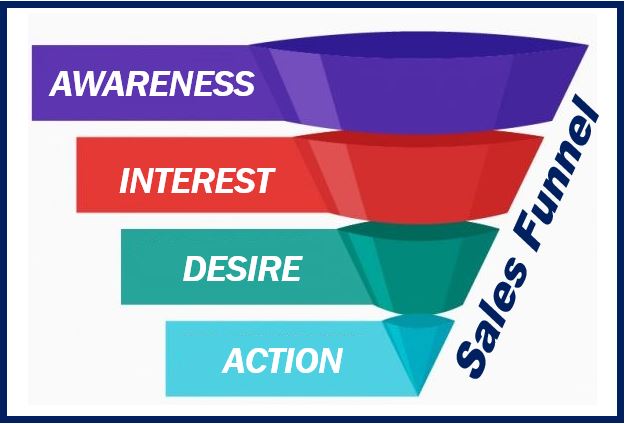Unlike the past, when a cold call from a salesperson might have been the first contact a prospect would have with a company, customers now drive the sales process. Given all the information available online, your potential patrons likely know your strengths, weaknesses, and comparisons to your competitors before you know anything about them.

Whether you offer cosmetics, lawn care, or information technology services, this situation may seem like an insurmountable challenge. But it’s actually an opportunity. If you proactively offer some of the information prospects are looking for, those seeking your products or services will view your company as a valued resource, an expert in your field, and, therefore, an entity they trust and want to do business with.
Content Marketing Is Educational Marketing
Providing valuable information to customers and prospects is known as content marketing. It’s not about selling, it’s about educating. To better understand content marketing, let’s take a look at what it is and isn’t.
Content marketing is NOT:
- Loaded with features and benefits
- Meant to close a sale
- Pushy
- Transactional
- Against the competition
Content marketing IS:
- Thought leadership – sharing your expertise
- Relationship-building
- Trust-building
- An invitation to engage one step further
- Offering something without expecting anything in return
Types of Content
An example of a content marketing piece is an article by a cosmetics company about finding the right shade of foundation. It might mention how this can be a tricky process and how each brand has its own shades, complicating the issue that much more. It might ask readers to join a newsletter, access a website for further information, or call for a free consultation. But these calls to action appear at the end of the article, only after the valuable information has been shared.
In addition to articles, content can be in the form of social media posts, blog posts, videos, ebooks, webinars, and podcasts. All of them should have the same characteristics as an article: providing useful information without any expectation of action on the part of the media consumer but with an invitation to take the next step if the consumer wants to further engage.
How to Develop Quality Content
Content development is a whole skillset and there are even people who do it exclusively for a living. There are many resources online about content development, but here are some of the basics.
Understand your audience
Your content should always be an “answer” to a question or problem your customers and prospects may have. In the article example above, the problem is not being able to find the right foundation shade.
Understand the sales funnel

In marketing, you typically divide your activities into Awareness, Interest, Desire, and Action. Create your content to align with one of these phases and it will be much more effective.
Always have a next step
Ultimately, you want people who engage with your content to become loyal customers. Make sure you give them a pathway to do so. For example, getting on a newsletter, receiving special offers, becoming a first-time customer, getting rewards, and continuing to purchase.
What to Do With Content
Once you’ve developed content, you can use it in numerous ways. First, you should post it on your website. Have a section (named Content or Resources) devoted exclusively to this kind of information. The section should be subdivided into types of content (blog posts, podcast episodes, articles, etc.) and easily searchable for topics.
Once you have it up on your website, you can start to distribute it through other channels, such as social media and newsletters. Always invite viewers to share.
Content is valuable, so don’t just use it once and forget it. For example, you can use a video on Twitter, LinkedIn, your blog, and a newsletter. You can share it again in several weeks or months. You can create a collection of related pieces, promote them separately, and then promote them as a series. This process of reusing content is known as repurposing.
Make a Content Development Plan
Don’t just create content randomly. Plan out what content you will develop and according to what timeframe. Create an editorial calendar to track your content development activities. For example, you might want to create posts for your blog weekly and social media messages several times per week and host a webinar once per quarter.
Use your editorial calendar to coordinate your content with things going on at your company, such as sales, expansions, events, or new product releases. Write it in advance or hire a content specialist to do so.
Finally, know what you want to achieve and adjust your content marketing program accordingly. For example, say you want to increase first-time customer purchases by 15%. After a period of time, determine whether your content marketing efforts have driven this result. If not, you may need to adjust your topics, tone, platform, frequency, or other factors.
In Summary
Unlike the past, your job as a business owner or marketing professional isn’t to coerce people into buying your products, convince them that the competition is terrible, or eliminate all their concerns. Your job is to provide real value to people before you’re even aware they’re considering doing business with you. By offering useful, educational content, you give them something they can use and allow them to determine if they want to engage more.
Interesting related article: “What is Digital Marketing?”

